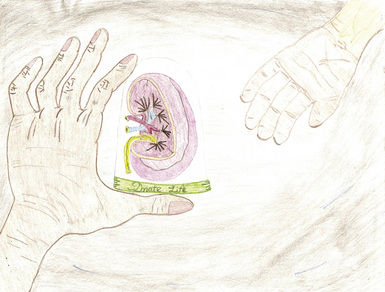42 Solid Organ Transplant
Every obstacle I have overcome
Has made me stronger in some way
And to get the best out of life
So this bump I’ve now stumbled upon
Cause I’m going to get through this
The frequency of organ transplantation has increased dramatically over the past 30 years and has increasingly become a part of patient care. In 2008, there were 27,961 solid organ transplants in the United States, with 1,964 of these procedures occurring in patients less than 18 years old (Table 42-1). Greater experience with the surgical techniques involved with organ transplantation and improved understanding of the etiology of organ rejection will likely lead to increases in the number of patients involved with transplant medicine.
TABLE 42-1 Distribution of Pediatric Solid Organ Transplants in 2008
| Organ | Number of pediatric transplants | 3-Year survival rates |
|---|---|---|
| Kidney | 773 (39%) | 97% |
| Liver | 613 (31%) | 88% |
| Heart | 365 (19%) | 81% |
| Intestine | 93 (5%) | 64% |
| Lung | 45 (2%) | 60% |
Data compiled from United Network for Organ Sharing 2008 and www.ustransplant.org
In the United States, transplant centers are not ranked, but there are national survival rates published on www.ustransplant.org. Patients and families are able to access this data to compare the outcomes of various transplant centers.
Transplant Evaluation
Ethical issues arise when transplant teams are faced with a family with financial and psychosocial limitations. The team must ensure that resources are available to allow the family to overcome these obstacles so that they do not compromise the child’s care. It is well documented that proper post-transplant care is essential to allow for a good outcome. Therefore, in some instances, patients are declined for transplant due to insurmountable psychosocial limitations. On rare occasions, issues of medical foster care are raised to provide a safe environment for the child post-transplant (Table 42-2).
TABLE 42-2 Transplant Team Members
| Transplant team member | Role |
|---|---|
| Surgeon | Performs transplant surgery |
| Physician | Provides medical care both pre- and post-transplant |
| Coordinator | Responsible for pre- and post-transplant care from a nursing perspective, coordination of care, evaluations and patient and/or family education |
| Social worker | Provides assessment and care around psychosocial needs of family during all phases of transplant process |
| Psychologist | Performs pre-transplant evaluation to identify any contraindications to transplant. Identifies need for continued therapy pre- and post-transplant |
Transplant Preparations
It is important to acknowledge that some patients become too ill and no longer remain viable transplant candidates. Furthermore, there are also numbers of waitlist deaths each year, where the appropriate organ is not found in time to save the child. Transplant caregivers then can find themselves in the situation of concurrently managing and maintaining end-stage diseases while simultaneously navigating the dying process. This can feel contradictory to the needs of staying active on a transplant list. It is not uncommon for members of the medical teams to have differing opinions on how to handle these situations. Families are also conflicted with the need to not give up, and yet spare their child any unnecessary pain or discomfort. Discussions about whether a patient can have a DNR order in place and still be active on the transplant list are not infrequent. An example might be a patient with cystic fibrosis who faces potential intubation for progressive end-stage lung disease yet still desires to reach transplantation. In this situation, some patients and/or families elect to proceed with intubation in the hope that an organ will be located in time. Others will choose to pursue more comfort care measures at this time. The palliative care team can be instrumental in guiding the patient, family, and caregivers through these difficult decisions (Fig. 42-1).
< div class='tao-gold-member'>
Stay updated, free articles. Join our Telegram channel

Full access? Get Clinical Tree



